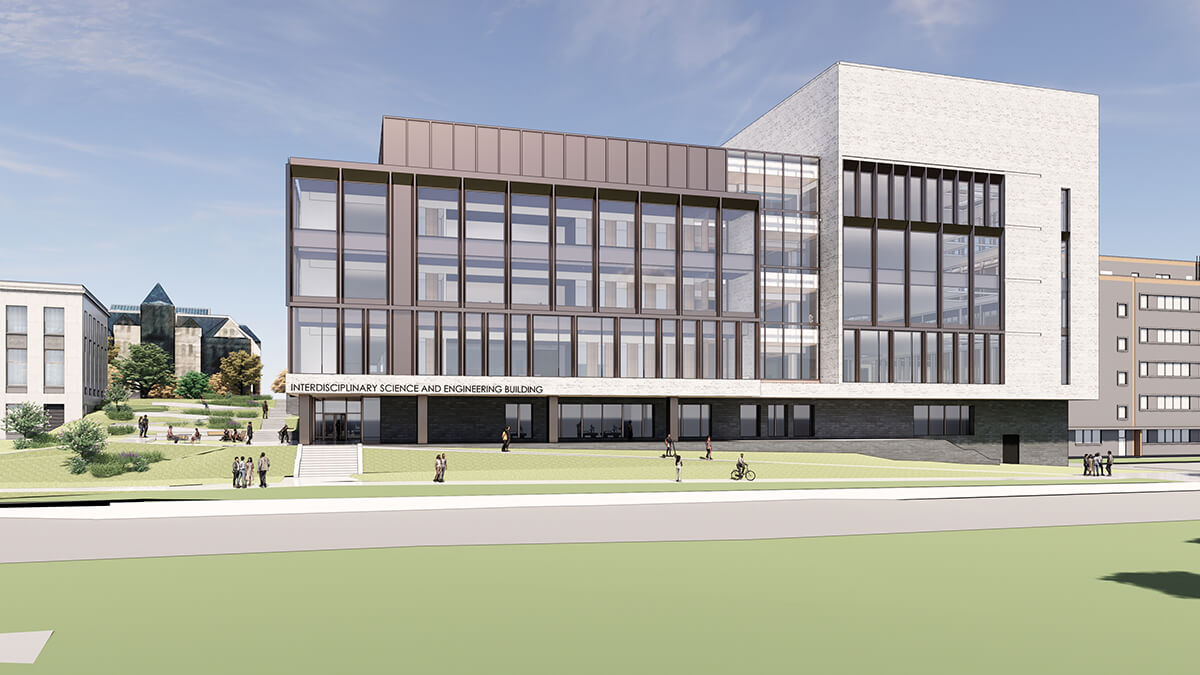features
An Inviting Gateway
Shaping a new entry to campus—and connections with neighbors
 Image: Rendering by HGA
Image: Rendering by HGACWRU's Julian Rogers has heard the same story from Cleveland residents, graduates of nearby high schools—even new campus employees.
"Many people who don't have a direct connection to the university can easily drive past and not know it's here," said Rogers (MNO '08), assistant vice president for local government and community relations.
It's easy to understand why. The back of a row of buildings along the nearby Martin Luther King Jr. Drive, for example, does little to invite entry onto campus with its loading docks, parking lots and hard-to-spot stairways to the quad itself.
In designing the Interdisciplinary Science and Engineering Building (ISEB), university officials have sought to redefine this space and create a more welcoming feel to this important connection with the community.
"This building is a great way to put those intentions into action," Rogers said. "We want to create a sense of place that ties in with our neighborhood and removes separation." Establishing this aim as a foundational element of the ISEB reflects one of President Eric W. Kaler's top priorities—fostering more opportunities for community engagement.
— Julian Rogers, assistant vice president for local government and community relations
"The campus did not purposely isolate itself from the neighborhoods around it, those communities had really not developed when the Case School of Applied Science, as it was named at the time, and Western Reserve University first occupied their current site," said John Grabowski, PhD (ADL '71; GRS '73, '77, history), an adjunct associate professor in the university's Department of History and editor of the Encyclopedia of Cleveland History.
The quad's higher elevation resulted in rear facades facing MLK Jr. Drive, Grabowski explained—design choices driven by several factors that included the topography and the periodic flooding of the now culverted Doan Brook running in the middle of the roadway. But perhaps the driving reason, he said, was the tradition of having collegiate buildings on a quad face inward.
"But unfortunately, these decisions created a separation, both real and symbolic, between the campus and its neighbors," Grabowski said. "The new building's design will be an intentional break from the logic of the past."
For example, the new research building will extend much closer to sidewalks at street level, replacing what's now a parking lot, and offer an inviting gateway onto campus. The "ISEB is part of a larger story of the university embracing the city of Cleveland," Rogers said. "As an anchor institution, we have an obligation to improve and connect with our community.
"This building is just one part of being a better neighbor," he added. "But it's an intentional and purposeful new front door, and we're eager to invite everyone in."





